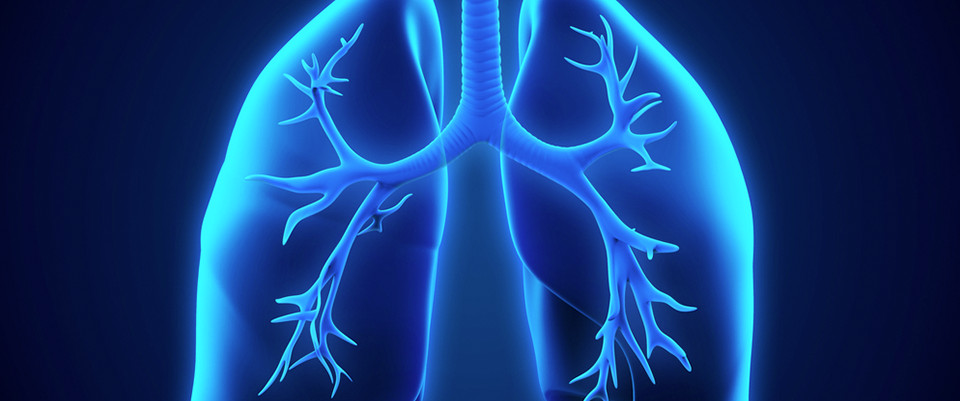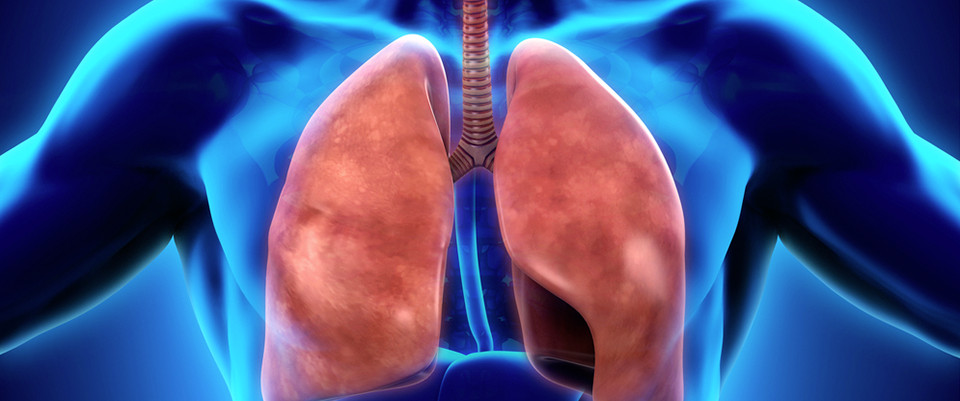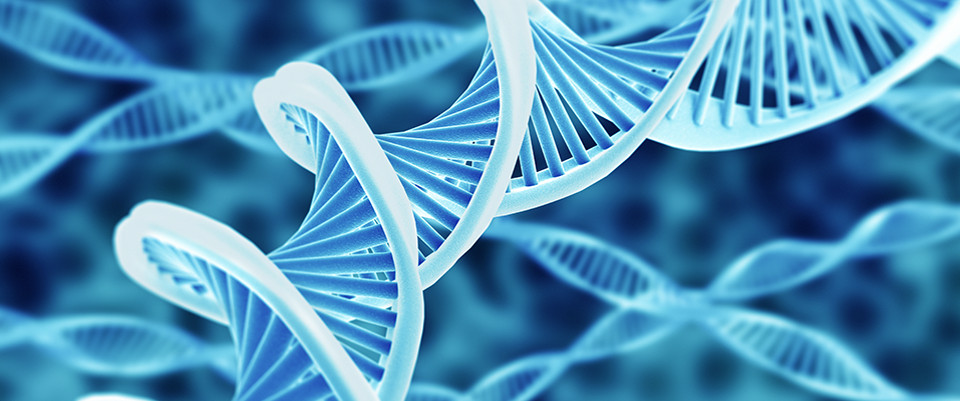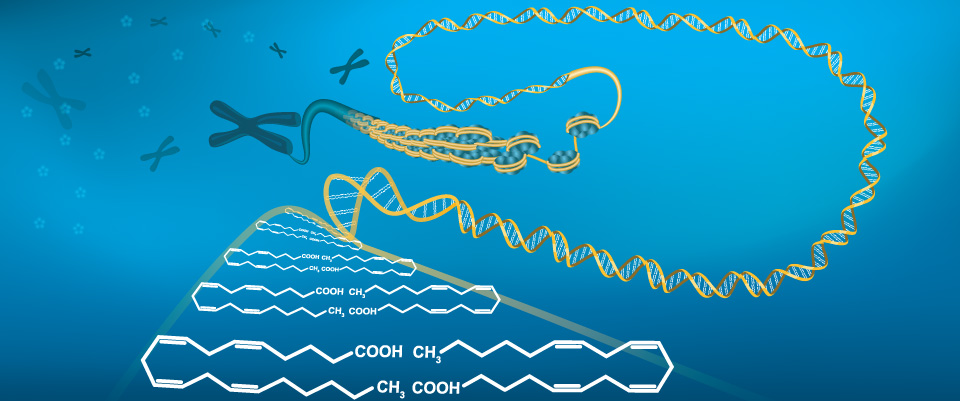PubMed
Cytochrome p450-soluble epoxide hydrolase derived linoleic acid oxylipins and cognitive performance in type 2 diabetes
J Lipid Res. 2023 May 26:100395. doi: 10.1016/j.jlr.2023.100395. Online ahead of print.ABSTRACTType 2 diabetes mellitus (T2DM) increases the risk of cognitive decline and dementia. Disruptions in the cytochrome P450-soluble epoxide hydrolase (CYP450-sEH) pathway have been reported in both T2DM and cognitive impairment. Obesity is common in this population and it has been associated with altered oxylipin concentrations. We examine linoleic acid (LA)-derived CYP450-sEH oxylipins and cognition in people with T2DM, and explore potential differences between obese and non-obese individuals. The study included 51 obese and 57 non-obese participants (mean age 63.0±9.9, 49% women) with T2DM. Executive function was assessed using the Stroop Color-Word Interference Test (Victoria Version), FAS-Verbal Fluency Test, Digit Symbol Substitution Test, and Trails Making Test-Part B. Verbal memory was assessed using the California Verbal Learning Test, 2nd Edition. Four LA-derived oxylipins were analyzed by ultra-high pressure-LC/MS, and the 12,13-dihydroxyoctadecamonoenoic acid (12,13-DiHOME) considered the main species of interest. All models controlled for age, sex, BMI, glycosylated hemoglobin A1c, diabetes duration, depression, hypertension, and years of education. The sEH-derived 12,13-DiHOME was associated with lower executive function scores (F1,98=7.513, p=0.007). The CYP450-derived 12(13)-epoxyoctadecamonoenoic acid (12(13)-EpOME) was associated with poorer executive function and verbal memory scores (F1,98=7.222, p=0.008 and F1,98=4.621, p=0.034, respectively). There were interactions between obesity and the 12,13-DiHOME/12(13)-EpOME ratio (F1,97=5.498, p=0.021), and between obesity and 9(10)-epoxyoctadecamonoenoic acid (9(10)-EpOME) concentrations (F1,97=4.126, p=0.045) predicting executive function such that relationships were stronger in obese individuals. These findings suggest that the CYP450-sEH pathway may be a potential therapeutic target for cognitive decline in T2DM, and for some markers relationships may be obesity-dependent.PMID:37245563 | DOI:10.1016/j.jlr.2023.100395
Longitudinal metabolomics analysis reveals the acute effect of cysteine and NAC included in the combined metabolic activators
Free Radic Biol Med. 2023 May 26:S0891-5849(23)00429-X. doi: 10.1016/j.freeradbiomed.2023.05.013. Online ahead of print.ABSTRACTGrowing evidence suggests that the depletion of plasma NAD+ and glutathione (GSH) may play an important role in the development of metabolic disorders. The administration of Combined Metabolic Activators (CMA), consisting of GSH and NAD+ precursors, has been explored as a promising therapeutic strategy to target multiple altered pathways associated with the pathogenesis of the diseases. Although studies have examined the therapeutic effect of CMA that contains N-acetyl-l-cysteine (NAC) as a metabolic activator, a system-wide comparison of the metabolic response to the administration of CMA with NAC and cysteine remains lacking. In this placebo-controlled study, we studied the acute effect of the CMA administration with different metabolic activators, including NAC or cysteine with/without nicotinamide or flush free niacin, and performed longitudinal untargeted-metabolomics profiling of plasma obtained from 70 well-characterized healthy volunteers. The time-series metabolomics data revealed the metabolic pathways affected after the administration of CMAs showed high similarity between CMA containing nicotinamide and NAC or cysteine as metabolic activators. Our analysis also showed that CMA with cysteine is well-tolerated and safe in healthy individuals throughout the study. Last, our study systematically provided insights into a complex and dynamics landscape involved in amino acid, lipid and nicotinamide metabolism, reflecting the metabolic responses to CMA administration containing different metabolic activators.PMID:37245532 | DOI:10.1016/j.freeradbiomed.2023.05.013
Metabolic reprogramming of renal epithelial cells contributes to lithium-induced nephrogenic diabetes insipidus
Biochim Biophys Acta Mol Basis Dis. 2023 May 26:166765. doi: 10.1016/j.bbadis.2023.166765. Online ahead of print.ABSTRACTLithium, mainstay treatment for bipolar disorder, frequently causes nephrogenic diabetes insipidus (NDI) and renal injury. However, the detailed mechanism remains unclear. Here we used the analysis of metabolomics and transcriptomics and metabolic intervention in a lithium-induced NDI model. Mice were treated with lithium chloride (40 mmol/kg chow) and rotenone (ROT, 100 ppm) in diet for 28 days. Transmission electron microscopy showed extensive mitochondrial structural abnormalities in whole nephron. ROT treatment markedly ameliorated lithium-induced NDI and mitochondrial structural abnormalities. Moreover, ROT attenuated the decrease of mitochondrial membrane potential in line with the upregulation of mitochondrial genes in kidney. Metabolomics and transcriptomics data demonstrated that lithium activated galactose metabolism, glycolysis, and amino sugar and nucleotide sugar metabolism. All these events were indicative of metabolic reprogramming in kidney cells. Importantly, ROT ameliorated metabolic reprogramming in NDI model. Based on transcriptomics analysis, we also found the activation of MAPK, mTOR and PI3K-Akt signaling pathways and impaired focal adhesion, ECM-receptor interaction and actin cytoskeleton in Li-NDI model were inhibited or attenuated by ROT treatment. Meanwhile, ROT administration inhibited the increase of Reactive Oxygen Species (ROS) in NDI kidneys along with enhanced SOD2 expression. Finally, we observed that ROT partially restored reduced the reduced AQP2 and enhanced urinary sodium excretion along with the blockade of increased PGE2 output. Taken together, the current study demonstrates that mitochondrial abnormalities and metabolic reprogramming play a key role in lithium-induced NDI, as well as the dysregulated signaling pathways, thereby serving as a novel therapeutic target.PMID:37245528 | DOI:10.1016/j.bbadis.2023.166765
Effect of orange solid waste diet on flesh quality and metabolic profile of common carp (Cyprinus carpio)
Food Chem. 2023 May 22;425:136427. doi: 10.1016/j.foodchem.2023.136427. Online ahead of print.ABSTRACTIn this study, we aimed to evaluate the effects of solid waste of Citrus sinensis (SWC) supplementation in diet on common carp (Cyprinus carpio) flesh quality and the potential mechanisms underlying these effects. Four diets, each with different levels of SWC (0%, 5%, 10%, and 15%), were formulated and administered to C. carpio (48.83 ± 5.59 g) for 60 days. The results showed that SWC diet significantly enhanced specific growth rate, muscle sweetness (via sweet amino acids and sweet molecules), and the nutritional value of fish meat (increased protein, α-vitamin E, and allopurinol). Chromatography-mass spectrometry analyses indicated that SWC supplementation increased the essential amino acid content in the diet. In addition, SWC diet promoted biosynthesis of non-essential amino acids in muscle by enhancing glycolysis and the tricarboxylic acid cycle. In conclusion, SWC could be a cost-effective solution for providing nutritious and flavourful aquatic products.PMID:37245462 | DOI:10.1016/j.foodchem.2023.136427
Recent research advances on non-linear phenomena in various biosystems
J Biosci Bioeng. 2023 May 26:S1389-1723(23)00107-X. doi: 10.1016/j.jbiosc.2023.03.012. Online ahead of print.ABSTRACTAll biological phenomena can be classified as open, dissipative and non-linear. Moreover, the most typical phenomena are associated with non-linearity, dissipation and openness in biological systems. In this review article, four research topics on non-linear biosystems are described to show the examples from various biological systems. First, membrane dynamics of a lipid bilayer for the cell membrane is described. Since the cell membrane separates the inside of the cell from the outside, self-organizing systems that form spatial patterns on membranes often depend on non-linear dynamics. Second, various data banks based on recent genomics analysis supply the data including vast functional proteins from many organisms and their variable species. Since the proteins existing in nature are only a very small part of the space represented by amino acid sequence, success of mutagenesis-based molecular evolution approach crucially depends on preparing a library with high enrichment of functional proteins. Third, photosynthetic organisms depend on ambient light, the regular and irregular changes of which have a significant impact on photosynthetic processes. The light-driven process proceeds through many redox couples in the cyanobacteria constituting chain of redox reactions. Forth topics focuses on a vertebrate model, the zebrafish, which can help to understand, predict and control the chaos of complex biological systems. In particular, during early developmental stages, developmental differentiation occurs dynamically from a fertilized egg to divided and mature cells. These exciting fields of complexity, chaos, and non-linear science have experienced impressive growth in recent decades. Finally, future directions for non-liner biosystems are presented.PMID:37246137 | DOI:10.1016/j.jbiosc.2023.03.012
Gut microbiome, metabolome, host immunity associated with inflammatory bowel disease and intervention of fecal microbiota transplantation
J Autoimmun. 2023 May 26:103062. doi: 10.1016/j.jaut.2023.103062. Online ahead of print.ABSTRACTGut dysbiosis has been associated with inflammatory bowel disease (IBD), one of the most common gastrointestinal diseases. The microbial communities play essential roles in host physiology, with profound effects on immune homeostasis, directly or via their metabolites and/or components. There are increasing clinical trials applying fecal microbiota transplantation (FMT) with Crohn's disease (CD) and ulcerative colitis (UC). The restoration of dysbiotic gut microbiome is considered as one of the mechanisms of FMT therapy. In this work, latest advances in the alterations in gut microbiome and metabolome features in IBD patients and experimental mechanistic understanding on their contribution to the immune dysfunction were reviewed. Then, the therapeutic outcomes of FMT on IBD were summarized based on clinical remission, endoscopic remission and histological remission of 27 clinical trials retrieved from PubMed which have been registered on ClinicalTrials.gov with the results been published in the past 10 years. Although FMT is established as an effective therapy for both subtypes of IBD, the promising outcomes are not always achieved. Among the 27 studies, only 11 studies performed gut microbiome profiling, 5 reported immune response alterations and 3 carried out metabolome analysis. Generally, FMT partially restored typical changes in IBD, resulted in increased α-diversity and species richness in responders and similar but less pronounced shifts of patient microbial and metabolomics profiles toward donor profiles. Measurements of immune responses to FMT mainly focused on T cells and revealed divergent effects on pro-/anti-inflammatory functions. The very limited information and the extremely confounding factors in the designs of the FMT trials significantly hindered a reasonable conclusion on the mechanistic involvement of gut microbiota and metabolites in clinical outcomes and an analysis of the inconsistencies.PMID:37246133 | DOI:10.1016/j.jaut.2023.103062
Using urinary metabolomics to identify metabolic pathways linked to cardiac structural alterations in young adults: The African-PREDICT study
Nutr Metab Cardiovasc Dis. 2023 May 12:S0939-4753(23)00193-X. doi: 10.1016/j.numecd.2023.05.010. Online ahead of print.ABSTRACTBACKGROUND AND AIMS: Risk factor exposure from young ages was shown to contribute to cardiovascular events - cardiac hypertrophy, which may be accompanied by an altered metabolism. To determine how early metabolic alterations associate with myocardial structural changes, we profiled urinary metabolites in young adults with cardiovascular disease (CVD) risk factor(s) and a control group without CVD risk factors.METHODS AND RESULTS: We included healthy adults (N = 1202), aged 20-30 years, stratified based on risk factors, i.e., obesity, physical inactivity, elevated blood pressure (BP), hyperglycemia, dyslipidemia, low socio-economic status, smoking and excessive alcohol use - forming the CVD risk group (N = 1036) and the control group (N = 166). Relative wall thickness (RWT) and left ventricular mass index (LVMi) were measured using echocardiography. Targeted metabolomics data were obtained using a liquid chromatography-tandem mass spectrometry method. Clinic systolic BP, 24 h BP and RWT were higher in the CVD risk group compared to the control group (all P ≤ 0.031). Exclusively in the CVD risk group, RWT associated with creatine and dodecanoylcarnitine; while LVMi associated with glycine, serine, glutamine, threonine, alanine, citrulline, creatine, proline, pyroglutamic acid and glutamic acid (all P ≤ 0.040). Exclusively in the control group, LVMi associated with propionylcarnitine and butyrylcarnitine (all P ≤ 0.009).CONCLUSION: In young adults without CVD, but with CVD risk factors, LVMi and RWT associated with metabolites linked energy metabolism (shifting from solely fatty acid oxidation to glycolysis, with impaired creatine kinase activity) and oxidative stress. Our findings support early onset metabolic changes accompanying cardiac structural alterations due to lifestyle and behavioural risk factors.PMID:37246075 | DOI:10.1016/j.numecd.2023.05.010
Helicobacter spp. are prevalent in wild mice and protect from lethal Citrobacterrodentium infection in the absence of adaptive immunity
Cell Rep. 2023 May 26;42(6):112549. doi: 10.1016/j.celrep.2023.112549. Online ahead of print.ABSTRACTTransfer of the gut microbiota from wild to laboratory mice alters the host's immune status and enhances resistance to infectious and metabolic diseases, but understanding of which microbes and how they promote host fitness is only emerging. Our analysis of metagenomic sequencing data reveals that Helicobacter spp. are enriched in wild compared with specific-pathogen-free (SPF) and conventionally housed mice, with multiple species commonly co-colonizing their hosts. We create laboratory mice harboring three non-SPF Helicobacter spp. to evaluate their effect on mucosal immunity and colonization resistance to the enteropathogen Citrobacter rodentium. Our experiments reveal that Helicobacter spp. interfere with C. rodentium colonization and attenuate C. rodentium-induced gut inflammation in wild-type (WT) mice, even preventing lethal infection in Rag2-/- SPF mice. Further analyses suggest that Helicobacter spp. interfere with tissue attachment of C. rodentium, putatively by reducing the availability of mucus-derived sugars. These results unveil pivotal protective functions of wild mouse microbiota constituents against intestinal infection.PMID:37245209 | DOI:10.1016/j.celrep.2023.112549
Changes in Metabolic Profile in PLWHIV Switching to Doravirine-Based Regimen
Viruses. 2023 Apr 25;15(5):1046. doi: 10.3390/v15051046.ABSTRACTThanks to the modern ARV regimens and the fact that the morbidity and mortality of metabolic syndrome increases with age, clinicians are continuously researching effective and safe antiretroviral regimens with low impact on the lipid profile. Doravirine (DOR) is the latest non-nucleoside reverse-transcriptase inhibitor (NNRTI) that shows long-term safety and tolerability and a favorable lipid profile. The aim of this study is to assess the impact of DOR-based three-drug regimens on the lipid profile in clinical practice. We retrospectively analyzed a cohort of 38 treatment-experienced, virologically suppressed people living with HIV (PLWH) switching to this regimen, following the eligibility criteria. We carried out comparison analysis of immunological and metabolic parameters between baseline and 48 weeks of follow up. In our cohort of treatment-experienced, virologically suppressed PLWH, three-drug regimens with DOR showed good efficacy and a positive profile on lipid metabolism at 48 weeks of follow up.PMID:37243133 | PMC:PMC10221541 | DOI:10.3390/v15051046
Impact of Maternal Lifestyle and Dietary Habits during Pregnancy on Newborn Metabolic Profile
Nutrients. 2023 May 13;15(10):2297. doi: 10.3390/nu15102297.ABSTRACTExpanded newborn screening (NBS) is a preventive program that allows for the early identification of over 40 congenital endocrine-metabolic diseases by analyzing dried blood spot samples collected from the newborn's heel within 48-72 h of birth. The determination of amino acids and acyl-carnitines by Flow Injection Analysis Tandem Mass Spectrometry (FIA-MS/MS) may also highlight metabolic alterations resulting from external factors, such as maternal nutrition. In the present study, we developed a questionnaire to investigate the eating habits of 109 women during pregnancy and statistically correlated the results from the investigation on dietary habits with the data obtained by the NBS laboratory of Abruzzo region (Italy). Parameters such as smoking, physical activity, and the intake of iodized salt, drugs, and supplements were analyzed. This study aimed to highlight how maternal lifestyle, diet, and drug intake during pregnancy may affect the neonatal metabolic profile, possibly generating false positive or false negative results in the NBS test. The results pointed out how the knowledge of maternal nutrition and lifestyle may also be precious in preventing misinterpretations of the neonatal metabolic profile, thereby reducing unnecessary stress for newborns and their parents and limiting costs for the health system.PMID:37242180 | PMC:PMC10221063 | DOI:10.3390/nu15102297
Lipidomic Characterization of Oocytes at Single-Cell Level Using Nanoflow Chromatography-Trapped Ion Mobility Spectrometry-Mass Spectrometry
Molecules. 2023 May 19;28(10):4202. doi: 10.3390/molecules28104202.ABSTRACTMass spectrometry (MS)-based lipidomic has become a powerful tool for studying lipids in biological systems. However, lipidome analysis at the single-cell level remains a challenge. Here, we report a highly sensitive lipidomic workflow based on nanoflow liquid chromatography and trapped ion mobility spectrometry (TIMS)-MS. This approach enables the high-coverage identification of lipidome landscape at the single-oocyte level. By using the proposed method, comprehensive lipid changes in porcine oocytes during their maturation were revealed. The results provide valuable insights into the structural changes of lipid molecules during porcine oocyte maturation, highlighting the significance of sphingolipids and glycerophospholipids. This study offers a new approach to the single-cell lipidomic.PMID:37241942 | PMC:PMC10221703 | DOI:10.3390/molecules28104202
Acute Myeloid Leukemia Causes Serious and Partially Irreversible Changes in Secretomes of Bone Marrow Multipotent Mesenchymal Stromal Cells
Int J Mol Sci. 2023 May 18;24(10):8953. doi: 10.3390/ijms24108953.ABSTRACTIn patients with acute myeloid leukemia (AML), malignant cells modify the properties of multipotent mesenchymal stromal cells (MSCs), reducing their ability to maintain normal hematopoiesis. The aim of this work was to elucidate the role of MSCs in supporting leukemia cells and the restoration of normal hematopoiesis by analyzing ex vivo MSC secretomes at the onset of AML and in remission. The study included MSCs obtained from the bone marrow of 13 AML patients and 21 healthy donors. The analysis of proteins contained in the MSCs-conditioned medium demonstrated that secretomes of patient MSCs differed little between the onset of AML and remission; pronounced differences were observed between MSC secretomes of AML patients and healthy donors. The onset of AML was accompanied by a decrease in the secretion of proteins related to ossification, transport, and immune response. In remission, but not at the onset, secretion of proteins responsible for cell adhesion, immune response, and complement was reduced compared to donors. We conclude that AML causes crucial and, to a large extent, irreversible changes in the secretome of bone marrow MSCs ex vivo. In remission, functions of MSCs remain impaired despite the absence of tumor cells and the formation of benign hematopoietic cells.PMID:37240298 | PMC:PMC10219446 | DOI:10.3390/ijms24108953
The metabolome and bacterial composition of high-moisture Italian ryegrass silage inoculated with lactic acid bacteria during ensiling
Biotechnol Biofuels Bioprod. 2023 May 27;16(1):91. doi: 10.1186/s13068-023-02346-8.ABSTRACTBACKGROUND: With its high nutritional value and productivity, Italian ryegrass as a biomass feedstock constantly supplies rumen degradable nitrogen and digestible fiber to ruminants. However, biofuel production is easily reduced during ensiling due to the high-moisture content of Italian ryegrass, leading to economic losses. Lactic acid bacteria inoculants could improve lignocellulosic degradation and fermentation quality and decrease dry matter loss during the bioprocessing of silage. Therefore, this study analyzed the effects of Lactobacillus buchneri TSy1-3 (HE), Lactobacillus rhamnosus BDy3-10 (HO), and the combination of HE and HO (M) on fermentation quality, bacterial community and metabolome in high-moisture Italian ryegrass silage during ensiling.RESULTS: The results showed that the pH value was significantly lower in the HO groups than in the other treatments at the end of ensiling, and the dry matter and acetic acid contents were significantly higher in the HO group than in the other inoculated groups. All inoculants decreased the diversity of the bacterial community and significantly increased the relative abundance of Lactobacillus. Inoculation with HO significantly improved the concentrations of organic acids, dipeptides, ferulic acid, apigenin, and laricitrin. Compared with Lactobacillus buchneri TSy1-3 (HE), HO significantly upregulated the flavonoid compounds in the flavone and flavonol biosynthesis pathway.CONCLUSIONS: Overall, these findings suggest that inoculation with HO was beneficial for the development of Italian ryegrass as a biomass feedstock, improving fermentation quality, accelerating changes in bacterial community composition and increasing biofunctional metabolites in high-moisture Italian ryegrass silage.PMID:37245019 | DOI:10.1186/s13068-023-02346-8
Metabolomic analysis of Mycobacterium tuberculosis reveals metabolic profiles for identification of drug-resistant tuberculosis
Sci Rep. 2023 May 27;13(1):8655. doi: 10.1038/s41598-023-35882-2.ABSTRACTThe detection of pre-extensively (pre-XDR) and extensively drug-resistant tuberculosis (XDR-TB) is challenging. Drug-susceptibility tests for some anti-TB drugs, especially ethambutol (ETH) and ethionamide (ETO), are problematic due to overlapping thresholds to differentiate between susceptible and resistant phenotypes. We aimed to identify possible metabolomic markers to detect Mycobacterium tuberculosis (Mtb) strains causing pre-XDR and XDR-TB. The metabolic patterns of ETH- and ETO-resistant Mtb isolates were also investigated. Metabolomics of 150 Mtb isolates (54 pre-XDR, 63 XDR-TB and 33 pan-susceptible; pan-S) were investigated. Metabolomics of ETH and ETO phenotypically resistant subgroups were analyzed using UHPLC-ESI-QTOF-MS/MS. Orthogonal partial least-squares discriminant analysis revealed distinct separation in all pairwise comparisons among groups. Two metabolites (meso-hydroxyheme and itaconic anhydride) were able to differentiate the pre-XDR and XDR-TB groups from the pan-S group with 100% sensitivity and 100% specificity. In comparisons of the ETH and ETO phenotypically resistant subsets, sets of increased (ETH = 15, ETO = 7) and decreased (ETH = 1, ETO = 6) metabolites specific for the resistance phenotype of each drug were found. We demonstrated the potential for metabolomics of Mtb to differentiate among types of DR-TB as well as between isolates that were phenotypically resistant to ETO and ETH. Thus, metabolomics might be further applied for DR-TB diagnosis and patient management.PMID:37244948 | DOI:10.1038/s41598-023-35882-2
MetaboMSDIA: A tool for implementing data-independent acquisition in metabolomic-based mass spectrometry analysis
Anal Chim Acta. 2023 Jul 25;1266:341308. doi: 10.1016/j.aca.2023.341308. Epub 2023 May 12.ABSTRACTData-dependent acquisition (DDA) is the most widely used mode in untargeted metabolomic analysis despite its limited tandem mass spectrometry (MS2) detection coverage. We present MetaboMSDIA for complete processing of data-independent acquisition (DIA) files by the extraction of multiplexed MS2 spectra and further identification of metabolites in open libraries. In the analysis of polar extracts from lemon and olive fruits, DIA allows one to obtain multiplexed MS2 spectra for 100% of precursor ions compared to 64% of precursor ions from average MS2 acquisition in DDA. MetaboMSDIA is compatible with MS2 repositories and homemade libraries prepared by analysis of standards. An additional option is based on filtering molecular entities by searching for selective fragmentation patterns according to selective neutral losses or product ions to target the annotation of families of metabolites. Combining both options, the applicability of MetaboMSDIA was tested by annotating 50 and 35 metabolites in polar extracts from lemon and olive fruit, respectively. MetaboMSDIA is particularly proposed to increase the acquisition coverage in untargeted metabolomics and to improve spectral quality, which are two critical pillars for the tentative annotation of metabolites. The R script used in MetaboMSDIA workflow is available at github repository (https://github.com/MonicaCalSan/MetaboMSDIA).PMID:37244659 | DOI:10.1016/j.aca.2023.341308
Metabolomics as a tool to elucidate biochemical cold adaptation in insects
Curr Opin Insect Sci. 2023 May 25:101061. doi: 10.1016/j.cois.2023.101061. Online ahead of print.ABSTRACTMetabolomics is an incredibly valuable tool in helping understand insect responses to cold. It not only characterizes how low temperature disrupts metabolic homeostasis, but also how it triggers fundamental adaptive responses, e.g. homeoviscous adaptation and cryoprotectant accumulation. This review outlines the advantages and disadvantages of different metabolomic technologies (NMR- vs. MS-based) and screening approaches (targeted vs. untargeted). We emphasize the importance of time series and tissue-specific data, as well as the challenges of disentangling insect vs. microbiome responses. In addition, we set out the need to move beyond simple correlations between metabolite abundance and tolerance phenotypes by undertaking functional assessments, e.g. using dietary supplementation or injections. We highlight studies at the vanguard of employing these approaches, and where key knowledge gaps remain.PMID:37244636 | DOI:10.1016/j.cois.2023.101061
Untargeted and targeted metabolomics reveal bile acid profile changes in rats with ethylene glycol-induced calcium oxalate nephrolithiasis
Chem Biol Interact. 2023 May 25:110570. doi: 10.1016/j.cbi.2023.110570. Online ahead of print.ABSTRACTCalcium oxalate (CaOx) nephrolithiasis is a prevalent disorder linked to metabolism. Examining metabolic alterations could potentially give an initial understanding of the origins of CaOx nephrolithiasis. This study aims to determine gut metabolic biomarkers differentiating CaOx nephrolithiasis utilizing untargeted and targeted metabolomics. CaOx nephrolithiasis model rats were built by 1% ethylene glycol administration. Histologic staining and renal function measurement revealed the presence of crystals in the lumen of the renal tubules, the renal injury and interstitial fibrosis in CaOx rats, demonstrating that the models of CaOx were established successfully. Hematoxylin & eosin (H&E) staining showed that CaOx group had inflammation and damage in the ileal tissue. Immunofluorescence and PCR results displayed that the tight junction proteins, ZO-1 and Occludin levels were decreased in the ileal tissues of the CaOx group. The untargeted metabolomic analysis revealed that 269 gut metabolites were differentially expressed between the CaOx group and the control group. Meanwhile, bile secretion, the main metabolic pathway in CaOx nephrolithiasis, was identified. Following, five significant bile acid metabolites were selected utilizing the targeted bile acid metabolomics, including Hyodeoxycholic acid (HDCA), Glycohyodeoxycholic acid (GHDCA), Nor-Deoxycholic Acid, omega-muricholic acid, and Taurolithocholic acid. Among these metabolites, HDCA and GHDCA presented the highest predictive accuracy with AUC = 1 to distinguish the CaOx group from the control group. As a result of network pharmacology, target genes of HDCA and GHDCA in CaOx nephrolithiasis were enriched in oxidative stress and apoptosis pathways. Conclusively, our study provides insight into bile acids metabolic changes related to CaOx nephrolithiasis. Although alterations in biochemical pathways indicate a complex pathology in CaOx rats, bile acid changes may serve as biomarkers of CaOx nephrolithiasis.PMID:37244400 | DOI:10.1016/j.cbi.2023.110570
Metabolic engineering of the shikimate pathway in Amycolatopsis strains for optimized glycopeptide antibiotic production
Metab Eng. 2023 May 25:S1096-7176(23)00079-4. doi: 10.1016/j.ymben.2023.05.005. Online ahead of print.ABSTRACTGlycopeptide antibiotics (GPA) consist of a glycosylated heptapeptide backbone enriched in aromatic residues originating from the shikimate pathway. Since the enzymatic reactions within the shikimate pathway are highly feedback-regulated, this raises the question as to how GPA producers control the delivery of precursors for GPA assembly. We chose Amycolatopsis balhimycina, the producer of balhimycin, as a model strain for analyzing the key enzymes of the shikimate pathway. A. balhimycina contains two copies each of the key enzymes of the shikimate pathway, deoxy-d-arabino-heptulosonate-7-phosphate synthase (Dahp) and prephenate dehydrogenase (Pdh), with one pair (Dahpsec and Pdhsec) encoded within the balhimycin biosynthetic gene cluster and one pair (Dahpprim and Pdhprim) in the core genome. While overexpression of the dahpsec gene resulted in a significant (>4-fold) increase in balhimycin yield, no positive effects were observed after overexpression of the pdhprim or pdhsec genes. Investigation of allosteric enzyme inhibition revealed that cross-regulation between the tyrosine and phenylalanine pathways plays an important role. Tyrosine, a key precursor of GPAs, was found to be a putative activator of prephenate dehydratase (Pdt), which catalyzes the first step reaction from the shikimate pathway intermediate prephenate to phenylalanine. Surprisingly, overexpression of pdt in A. balhimycina led to an increase in antibiotic production in this modified strain. In order to demonstrate that this metabolic engineering approach is generally applicable to GPA producers, we subsequently applied the strategy to Amycolatopsis japonicum and improved the production of ristomycin A, which is used in diagnosis of genetic disorders. Comparison of "cluster-specific" enzymes with the isoenzymes from the primary metabolism's pathway provided insights into the adaptive mechanisms used by producers to ensure adequate precursor supply and GPA yields. These insights further demonstrate the importance of a holistic approach in bioengineering efforts that takes into account not only peptide assembly but also adequate precursor supply.PMID:37244369 | DOI:10.1016/j.ymben.2023.05.005
Transcriptomics integrated with metabolomics provides a new strategy for mining key genes in response to low temperature stress in Helictotrichon virescens
Int J Biol Macromol. 2023 May 25:125070. doi: 10.1016/j.ijbiomac.2023.125070. Online ahead of print.ABSTRACTH. virescens is a perennial herbaceous plant with highly tolerant to cold weather, but the key genes that respond to low temperature stress still remain unclear. Hence, RNA-seq was performed using leaves of H. virescens treated at 0 °C and 25 °C for 12 h, 36 h, and 60 h, respectively, and a total of 9416 DEGs were significantly enriched into seven KEGG pathways. The LC-QTRAP platform was performed using leaves of H. virescens leaves at 0 °C and 25 °C for 12 h, 36 h, and 60 h, respectively, and a total of 1075 metabolites were detected, which were divided into 10 categories. Additionally, 18 major metabolites, two key pathways, and six key genes were mined using a multi-omics analytical strategy. The RT-PCR results showed that with the extension of treatment time, the expression levels of key genes in the treatment group gradually increased, and the difference between the treatment group and the control group was extremely significant. Notably, the functional verification results showed that the key genes positively regulated cold tolerance of H. virescens. These results can lay a foundation for the in-depth analysis of the mechanism of response of perennial herbs to low temperature stress.PMID:37244338 | DOI:10.1016/j.ijbiomac.2023.125070
Mitochondrial dysfunction in metabolic disorders induced by per- and polyfluoroalkyl substance mixtures in zebrafish larvae
Environ Int. 2023 May 15;176:107977. doi: 10.1016/j.envint.2023.107977. Online ahead of print.ABSTRACTSeveral per- and polyfluoroalkyl substances (PFAS) have been linked to metabolic disorders in organisms. However, few studies have considered their combined effects, which would be more representative of PFAS occurring in the environment. In this study, zebrafish embryos were exposed to a mixture of 18 PFAS at three environmentally relevant concentrations for 5 days to assess their bioconcentration and metabolic consequences. The burdens of ∑PFAS in zebrafish larvae were 0.12, 1.58, and 9.63 mg/kg in the 0.5, 5, and 50 μg/L treatment groups, respectively. Exposure to the PFAS mixture accelerated hatching and larval heart rates, increased energy expenditure, and reduced ATP levels and glucose contents due to decreased feed intake and glucose uptake. Metabolomic analysis revealed that exposure to the PFAS mixture enhanced glycolysis but inhibited phospholipid synthesis, and significantly increased the expression of lipid metabolism related genes (srebf1, acox, and pparα), which indicated enhanced β-oxidation. The significant changes in mitochondrial membrane potential, mitochondrial content, and the transcription of genes involved in the mitochondrial respiratory chain (mfn2, ndufs1, atp5fa1, and mt-nd1) and mitochondrial DNA replication and transcription (18rs-rrn, and polg1) suggested that exposure to the PFAS mixture could cause mitochondrial dysfunction and further disrupt glucose and lipid metabolic pathways, ultimately causing metabolic disorders in zebrafish larvae. These findings demonstrate the importance of assessing the metabolic effects of PFAS mixtures on early development in wildlife and humans.PMID:37244004 | DOI:10.1016/j.envint.2023.107977











